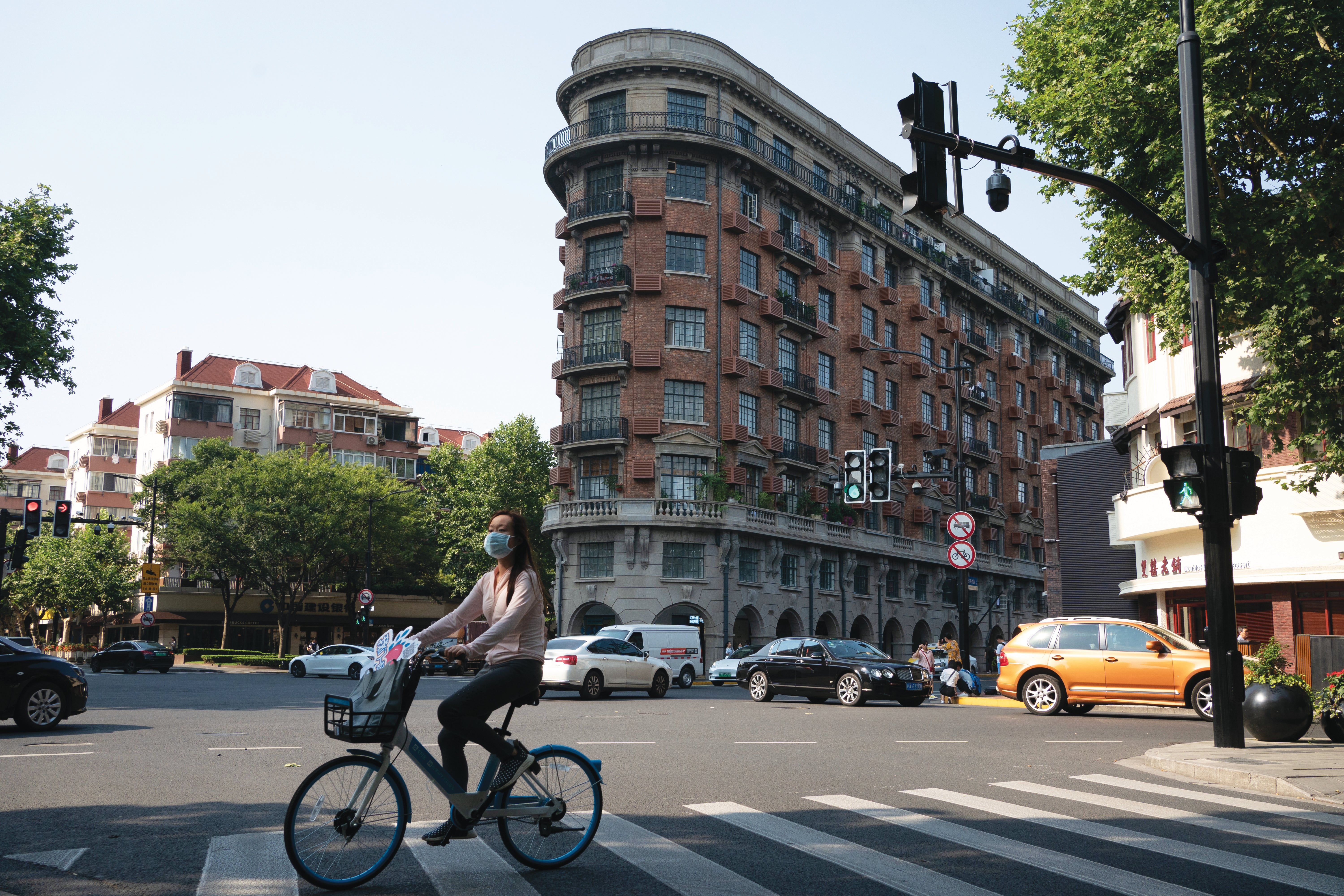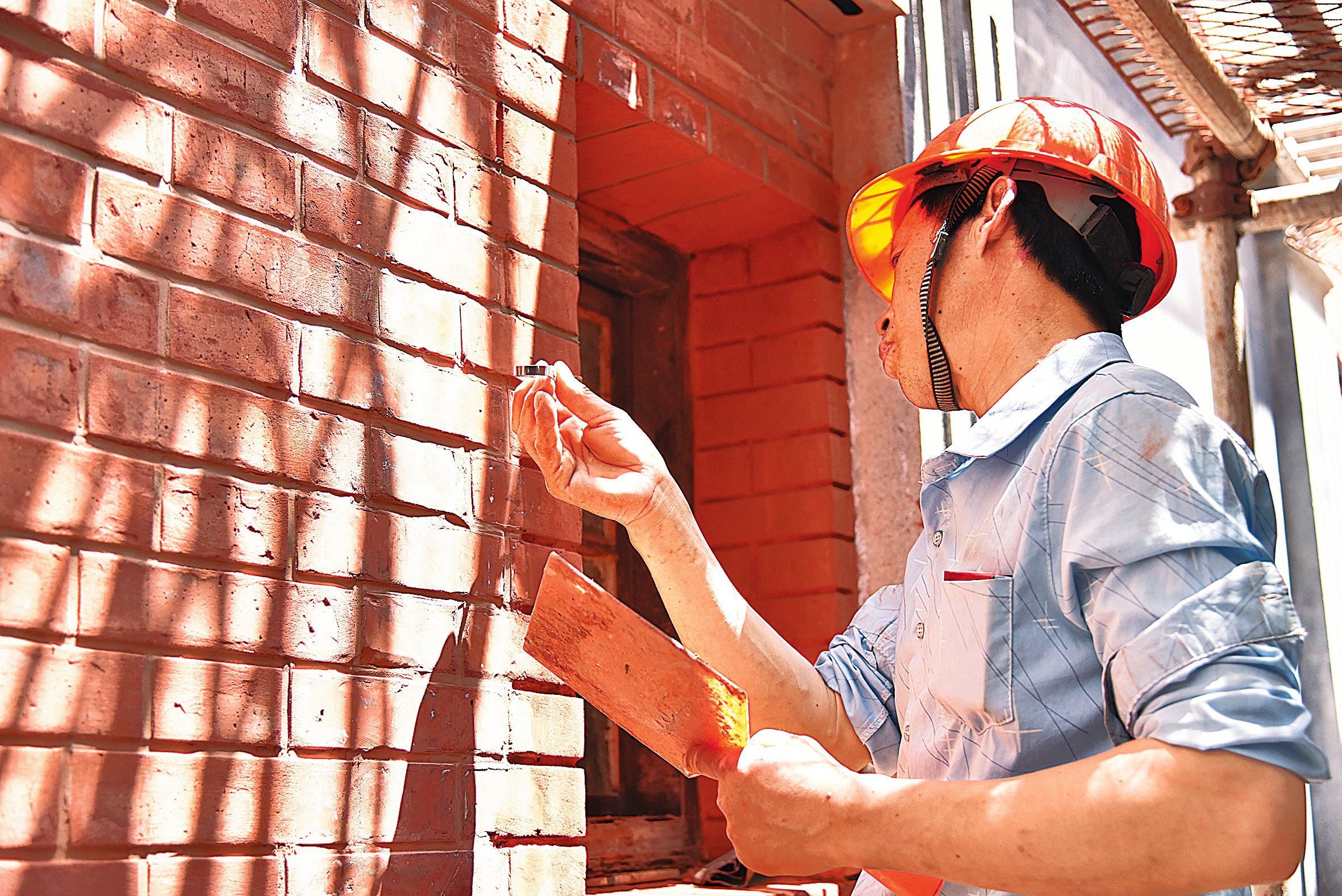Giving historical buildings a new look
THE ARTICLES ON THESE PAGES ARE PRODUCED BY CHINA DAILY, WHICH TAKES SOLE RESPONSIBILITY FOR THE CONTENTS

Cement might be a common construction material today, but the use of this seemingly mundane substance in old buildings can at times reveal interesting features to architects.
“Cement is commonly stored in bags these days, but a century ago, it was such a rare and expensive material that it was kept in barrels. When you see historical garden houses in Shanghai with cement structures, it means their developers or owners were wealthy,” says Gu Zhifeng, general manager of Shanghai Xufang Construction Industry Co.
Hidden details are part of reasons behind Gu’s passion in restoring old buildings. He has been doing this for 14 years. Such details also help him to determine how he goes about giving ancient structures a new breath of life while also retaining their original charm.
Established in 1990, the company is one of many enterprises enlisted by the Shanghai government to restore historical buildings that have fallen into disrepair. The company’s latest major undertaking is the restoration of buildings in a 1.1-square-mile zone in the former French concession area.
A part of the Hengfu historical and cultural area, which has a history dating back to the time when the city opened its port to foreign trade in the 1900s, this zone has many old buildings, some of which were once homes of famous personalities such as the Chinese author Ba Jin (1904-2005).

Many buildings in this zone have been listed as historical structures under government protection. “This unique cluster of modern buildings is believed to be the largest of its kind in the city. It is special as it features buildings that integrate Chinese architectural styles with Western facades,” Gu says. “However, most buildings are predominantly built with wood and brick, not concrete. This means they can be easily damaged by woodworm infestation or high humidity. It’s our duty to preserve these traces of history, with a focus on craftwork and architectural design. We’re here to give new life to the structures.”
According to Gu, the restoration of protected buildings is nothing like constructing a new one as special preparation must be made. For example, the sand used to restore protected buildings must be filtered two more times than usual to make it suitable for the old structures.
The bricks have to be custom-made, too. Gu says three types of bricks need to be smashed and mixed to form new bricks that are of similar colour and quality to the original.
One of the most arduous projects undertaken by the company in recent times is the restoration of a garden residence at 63 Kangping Road, which is located within the zone. Built in the 1940s, this three-storey house, with semi-circular balconies on each floor and a red-brick facade, has been designated a cultural relic. To restore the building, the team at Shanghai Xufang had to research the original style of the structure and scour for the right materials.
While retaining the original look of the building was important, Gu and his team also had to introduce new elements required today.
A case in point is the installation of a digital-monitoring system in the Wukang Mansion that helps with the management of the building. The team also had to move air conditioning units to the interior of the building due to safety concerns.
“We preserve traces that tell of the building’s history, but remove those that aren’t aligned with today’s safety standards. Some might think that building restoration is all about replacing the old with the new, but I treasure the imperfections that have been created by either time or human activities,” says Gu. “After all, buildings are for people, and it is only through these traces that we can learn about the background of a building.”
Previously published on Chinadaily.com.cn
